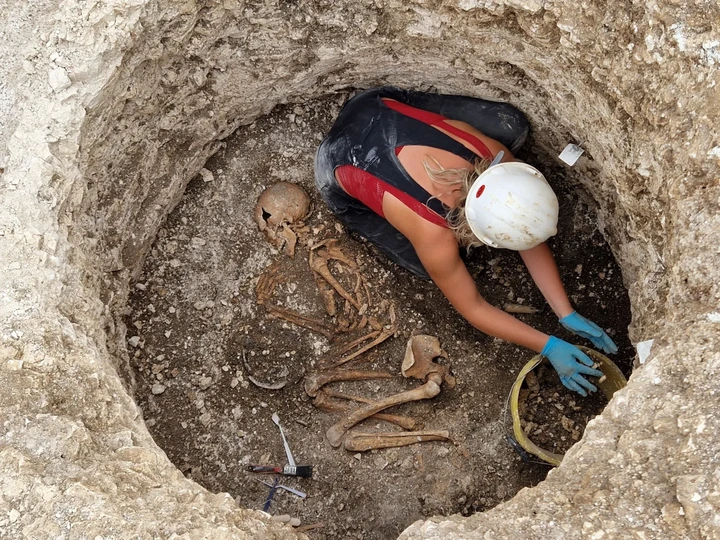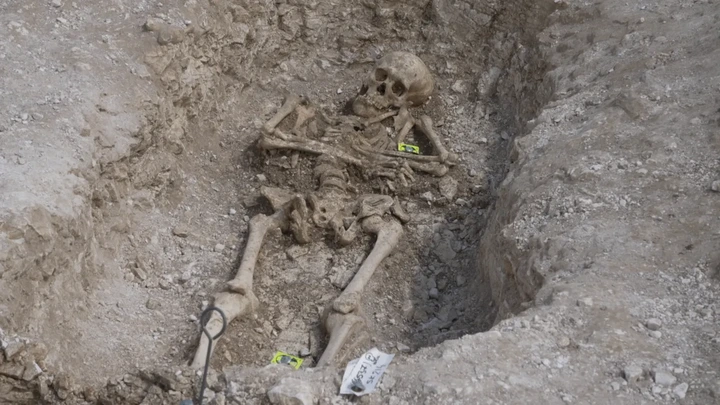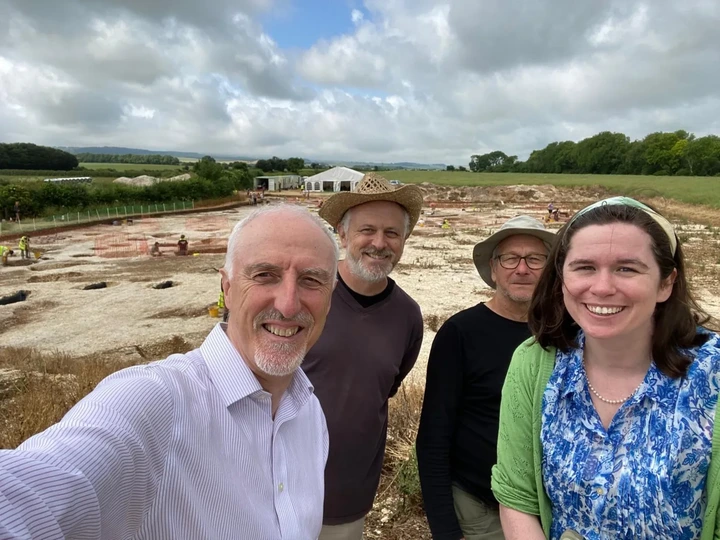
View pictures in App save up to 80% data.
New research suggests that women in Britain 2,000 years ago may have transferred land and wealth to their daughters rather than their sons, indicating that communities were organized around maternal lineage.
Skeletons discovered in Dorset revealed DNA evidence indicating that Celtic men relocated to reside with the families and communities of their wives.
Researchers discovered indications of an entire community that developed over generations centered on the female lineage of a family, likely tracing back to a single woman.
"According to Dr. Lara Cassidy, the lead author of the study from Trinity College Dublin, this suggests that during the Iron Age in Britain, women held significant power and were capable of influencing the society's direction in various aspects."

View pictures in App save up to 80% data.
This marks the first documented instance of communities forming around women in ancient European history.
Researchers suggest that the communities likely devoted significant resources to their daughters, anticipating that they would inherit their mothers' social standing.
Dr. Cassidy remarks, "While it's quite uncommon in today's societies, this may not have always been true."
The team discovered indications that it occurred in various locations across Britain, implying that it was prevalent.
The communities examined thrived during the era of Boudica, the warrior queen who spearheaded a revolt against Roman forces in East Anglia circa AD 61.
Dr. Cassidy analyzed the DNA extracted from the skeletal remains of 57 members of a tribe known as the Durotriges. This group inhabited Winterborne Kingston in Dorset during the period spanning from 100 BC to AD 100.
A team of archaeologists from Bournemouth University excavated the skeletons from a burial site.
Through the analysis of mitochondrial DNA, which is inherited exclusively from mothers, Dr. Cassidy discovered that the majority of women in the community share a familial connection that stretches back several generations.
In contrast, the Y chromosomes exhibited significant diversity, which is inherited from father to son, suggesting that men from various families integrated into the community through marriage.

View pictures in App save up to 80% data.
The DNA examination suggests that the majority of the ancestral lineage can be traced back to one particular woman.
The findings suggest that this society operated under a matrilocal structure, where a husband would relocate to reside within his wife's community.
Dr. Cassidy states, "One of the most apparent advantages for a woman is that by staying at home, she maintains her support network. Her parents, siblings, and family members remain close by."
"Your husband is the one entering the picture; he is the unfamiliar face in the community and relies on your family for his support and land," she continues.
The researchers discovered similar evidence of matrilocality in skeletal remains from additional burial sites, including those located in Cornwall and Yorkshire.
She argues that instances of influential women in ancient societies have frequently been overlooked as isolated cases rather than the standard, but these discoveries call that perspective into question.
Archaeologists Professor Miles Russell and Professor Martin Smith discovered additional proof indicating that women held a significant status.

View pictures in App save up to 80% data.
"We find quite elaborately furnished graves with high status objects of wealth. Every time we find that, it occurs in women's graves, so we think wealth was being transferred down the female line," says Prof Martin Smith at Bournemouth University.
The results also support ancient Roman texts that indicated women in Britain held considerable power, arguably even greater than that of their counterparts in Rome.
However, Romans such as Julius Caesar considered that to be a mark of primitiveness.
"According to Professor Miles Russell from Bournemouth University, 'Women in Britain held significant power, contributing to a more egalitarian society. This was a major issue for the Romans, who lived in a highly patriarchal culture. To the Romans, this characteristic made the Britons appear as the epitome of barbarism.'"
Most societies today follow a patrilocal structure, where women relocate to the communities of their husbands.
However, certain matrilocal communities can still be found today or have existed in the recent past, such as the Akans in Ghana, West Africa, and the Cherokee in North America.
Researchers suggest that Iron Age Britain might have been matrilocal, as men were often absent due to warfare.
Dr. Cassidy likens it to World War II, a time when women experienced an increase in their political and economic influence.
According to her, matrilocal societies tend to have a lower likelihood of facing internal conflicts.
"It has the potential to foster a sense of togetherness among nearby communities and villages. By separating clusters of related males, it prevents the formation of deep bonds and the onset of conflicts with neighboring related males," she proposes.
The results have been released in the scientific publication Nature.
Follow Georgina on Blue Sky.
 Top-rated Choice
Top-rated Choice